
The robes known as ‘banyans’ were not the only garments of that name in the 18th and 19th centuries: there was another such, just as unlikely as the British Nabob’s princely vestment.
No less an authority than Admiral W.H. Smyth, the 19th century’s pre-eminent expert on nautical terms and usages,
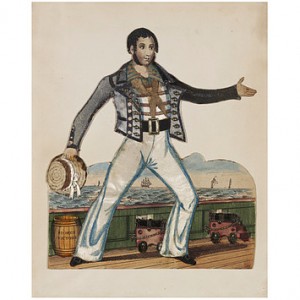
was to define this incarnation of the banyan as ‘a sailor’s coloured tunic’.
In other words, at this stage of its evolution, the banyan was a prototype of the modern T-shirt and was usually worn by sailors.

It was often accompanied by an accessory that was also of Indian descent – the bandhna,
a head-scarf that came to be absorbed
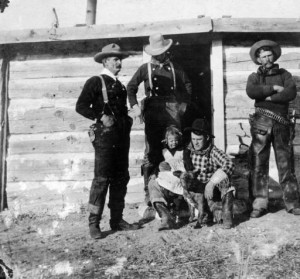
into Western costume as the ‘bandanna’.
But the word ‘banyan’ had yet another naval association. On British navy vessels, from the 16th century to the 19th, sailors were made to do without meat one day every week (the measure was intended to conserve provisions while at sea). These meatless days came to be known as ‘banyan days’ – for banias (and Indians in general) were known to be votaries of vegetarianism.
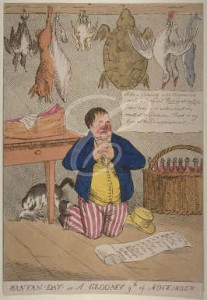
These days of enforced vegetarianism (‘banyanism’) were greatly dreaded by sailors. This 1810 lithograph from the London Metropolitan Archives is entitled ‘Banyan Day, or a gloomy 9th of November.’
It is a satirical portrayal of a man depicted as a sailor contemplating a meatless day: ‘His nose is red and he weeps while his mouth waters as he thinks of the food and items which will not be present. Banyan Day was a sea term for a meatless day .’
But in time, as often happens, this usage underwent a peculiar inversion so that it came to refer to a feast. This is how it is described on the website of a well-known naval and military museum:
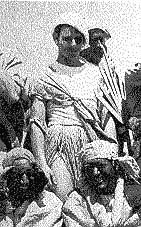
‘A banyan is a special kind of navy party. In spite of the changing nature of the banyan, there are three constants: it is always a fun occasion, it is held outdoors, and the emphasis is on good food, good drink and good friends – something along the lines of an old-fashioned picnic.’
How did a sailor’s tunic come to be domesticated as our beloved Indian banyan? I believe the transition was effected by lascars –

the Asian mariners who formed a large part of the sea-going workforce in the age of sail. They were probably among the first South Asians to adopt the banyan as an undergarment.
These sailors may have been underpaid, but they were the earliest avatars of the global Indian and it is easy to understand why their attire might have possessed a certain kind of glamour in the eyes of their compatriots.
It may be difficult to imagine that the humble banyan ever possessed the same cosmoplitan appeal that would later lead to India’s fervent adoption of blue jeans, but it is worth remembering that denim too has returned to the subcontinent after traveling a similarly tortuous route: its colour came originally from an Indian product, indigo, and a common type of clothing made from this fabric took its name from a part of Mumbai –
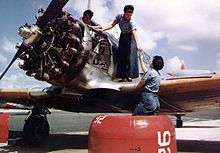
‘dungarees’ are, after all, natives of the erstwhile ‘Dongari Killa’ (‘Dongari Fort’ – now known just as ‘Fort’). The difference between dungarees and denim is that the former are made of dyed yarn while the latter are dyed after weaving.
Thus did the ‘banyan’ (in the original sense of ‘Indian’) come full circle, having been reshaped and refashioned by a journey across the oceans. In my novel, Sea of Poppies, there is a character (Neel) who has a theory about the banyan: he argues that the status of this garment has risen and fallen with the fortunes of the Indian subcontinent. When India was a land fabled for its riches, the word banyan was associated with extravagantly sumptuous robes; as the subcontinent’s fortunes declined, the banyan dwindled into the humblest item of everyday wear. The implication of this of course, is that as India’s economy grows, the fortunes of the banyan will rise again, perhaps to a point where it will become once more, a finely crafted garment. Designers take note: there is no article of Indian clothing that has a richer, more varied and more cosmopolitan past, and a vaunted place in history awaits the artist who can claim authorship of the next stage in the evolution of the banyan.

Dear Amitav-ji,
I read this article with a lot of reverence. The baniyan, as also the “ganji” is as you correctly say, is an indivisible part of the indian man’s attire. It is extremely personal, and goes hand in hand with the lower underwear, which could be the chaddi, or katta / kacchha. I doubt you’d find a good god fearing indian without the same.
I am quite fascinated with your series of the baniyan. Albeit i would like if you also do a series on the sudreh… sadra.. which is a west indian thing. As you may know, the sudreh is a parsi thing, and it is a part of the sacred duty of a parsi to wear it, just like the kusti. You refer the kusti at length in Sea of poppies, and i appreciated it very much, since being a parsi, the act of “holding your kusti” is a very slight nuance, that all our elders talk about… and no parsi, who is god-fearing, honest, and pious, would ever be able to come out of his element and speak a lie while holding his kusti. I wonder where you came across the same, and how you decided to include it in the book. It was a treat coming from an author who is not himself a bawa, and it feels like you completely got under the skin of the charachter. It always puzzles me how, since we bawas are quite “modern” people and most modern people would have long since forgotten this nuance.
Old Gujaratis still have the sadra as a vest. and it is always made of cotton, the thinner the better and most of the time – not industrially stitched. This is in quite contrast to the baniyan, which is always industrially woven and stitched… most of the time mass produced. This sadra, comes with a convienient top pocket, and a concealed slit side pocket which is very handy for storing cash. Do look it up, and if possible share.
The Dagli – is another interesting apparel of the bawas. I guess they get it from the Saurashtra or kathiawad region where a short vest called the dagla with flares is still very current.
Another thing is that it is very difficult for us to follow up our comments on your blog to see if they have been posted / someone has commented on it. Could you include a link somewhere where one could be emailed when the comment has been published or you / someone else comments on our comment? That way. it becomes easier to continue a conversation however old. Or else we have to scroll to every page we had commented on.
Also, you post letters from people who have written to you. I wasn’t able to locate your address. If you could be kind enough to share that with me, it would be easy to write to you directly, as i feel the comment posting is for the particular comment only and not for general other topics. It would be very kind of you.
best regards,